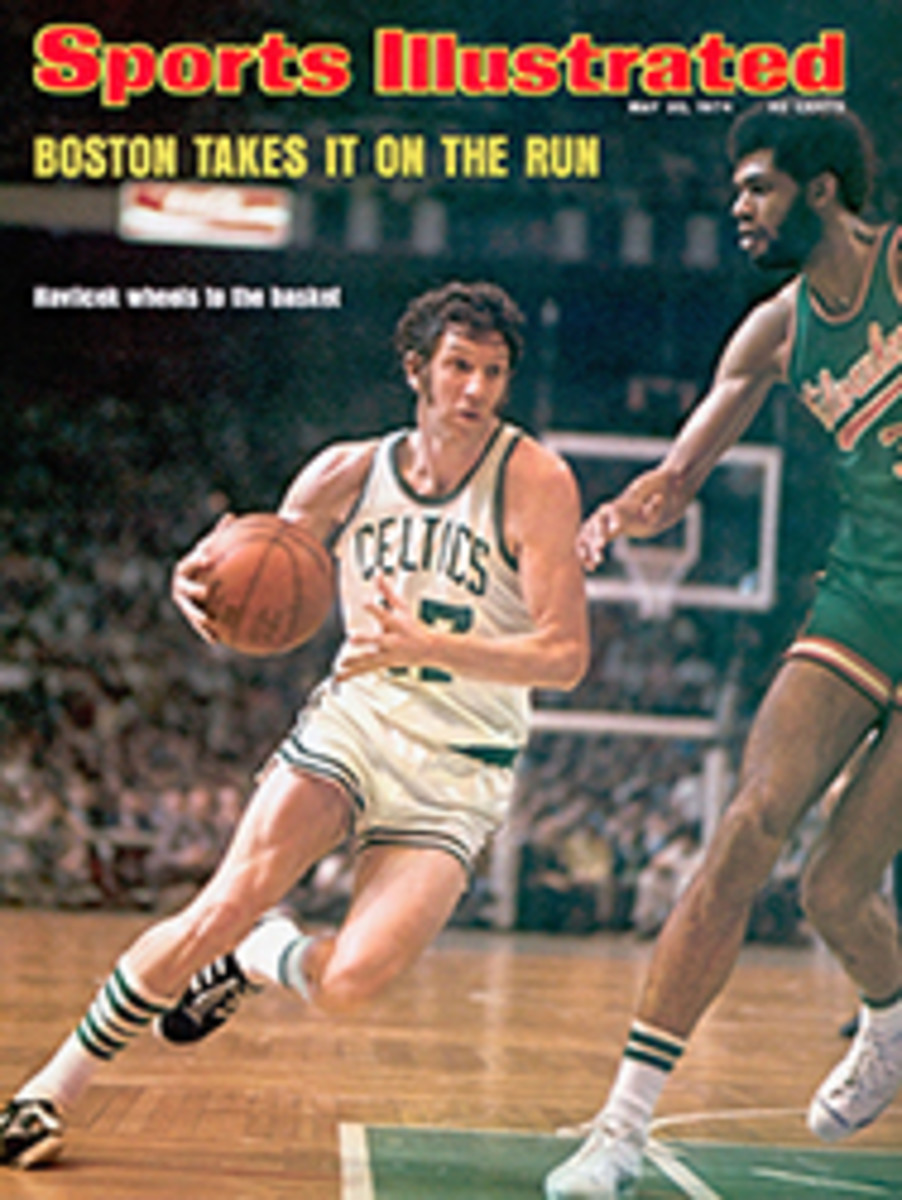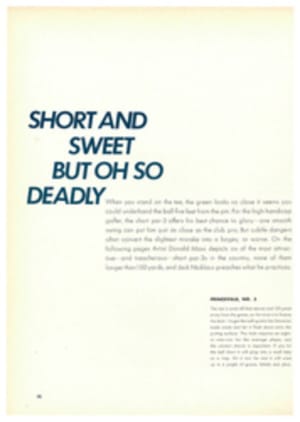
AND YET A DUFFER CAN BE A HERO
A short par-3, like death or a banana peel, is a great equalizer. Think about it. Those little 110-to 150-yarders are the only holes on a golf course where the duffer can hope to match the club champion or even a professional. Put simply, if I ever had to go head to head with a 100-shooter on one given hole, I wouldn't choose a short par-3. Give me a long par-5, enough room for the duffer to make some mistakes.
The short par-3 is too much like sudden death. I look for a birdie on such a hole, and so does the scratch player. The average guy, say a 12-to 16-handicapper, while hoping for a birdie, feels confident that at least he won't bogey, and the 100-shooter knows he can make a par if he just keeps his wits about him. It may be that this very confidence is what makes a golfer play it well. In other words, because he feels he can play the par-3 well, he relaxes and does play it well.
But matching your score to your expectations is a matter of seasoning the optimism with a bit of clear thinking. First, the subject of club selection. I don't know why it is, but the 100-shooter will invariably underclub himself. While pondering his choice he is remembering the one time he used a five and hit over the green instead of the 77 times he used a six and came up short. He also tends to play for solid contact on every shot, when actually he only accomplishes this once in every 10 shots or so. It may sound silly to play for a miss, but it is often the realistic thing to do. A five-iron, even if you don't quite catch all of it, will get you onto the green more often than not, while a six just increases the odds against you. Sure, with a five the ball might go clear to the back edge of the green on the occasion that you do catch all of it, but a realist will figure the percentages.
The wind, the placement of the pin and the location of the tee are what determine my choice of club, and on the 135-yard 12th at Augusta National (left), which I consider the most demanding tournament hole in the world, I have used every iron from a four to a nine. There is always one day of the four days of the Masters when the pin is on the left, the closest part of the green, and the tee is up front. For some reason it seems that day is usually the best of the tournament, with a pleasant breeze coming down the hill behind you—a nice nine-iron shot. But let the pin be placed on the far right and the tee back and the wind blowing in from the right and it's "six-irons out" everywhere. I never play for the pin in those conditions. I may get there, but what I'm aiming for is the center of the green, just beyond the front bunker. I want to get over the water but stay out of the back bunkers, so even if I end up chipping from the swale that runs along the back of the green I'm not unhappy.
In the same situation, a good golfer with a tendency to fade should aim at the left side of the green and try to work the ball. If the main problem for a slightly lesser talent is merely clearing the water, he first should be sure that he takes enough club and that he aims to the left, no matter where the pin is, the left being the closest part of the green, and plan on chipping for a three. A three or even a four beats knocking it into the water twice for a seven.
Being realistic, however, doesn't obviate the need to be aggressive if you want to make birdies. No matter what club I choose for a short par-3 I am going to be sure I hit it hard. If the choice for an average golfer is between a good firm nine and an easy eight, I'd rather see him take the nine. I think he has more of a tendency to come off the easy eight, thereby sending it all over the place. If he is hitting into the wind, though, and the choice is between a hard eight, say, and an easy seven, I'd advise the seven. I would handle the shot by choking down an inch or two so I can hit it just as hard as the eight but still get the lower trajectory of the seven. I don't want to hang it up there in the wind.
Sometimes the very thing that makes a short par-3 visually memorable is just what makes it hard to play. The 7th at Pebble Beach, for instance, is a tee shot from high above the green. The height can cause a problem in depth perception and make it difficult to judge the right club to use. On the 15th at Cypress Point the green is on a pretty little headland above rocks and water, but the shot is extremely tricky because the green banks sharply in the direction of the tee. And on both holes the wind almost always compounds the difficulty.
Because of the tendency when hitting into the wind to put backspin on the ball, a shot that is right on line to a pin at the rear of the 15th at Cypress will bite and come back to the front edge every time. Gosh, that's a difficult shot! If I am hitting into the wind on the 7th at Pebble Beach, and usually I am, rather than taking an eight or a nine and hitting it hard, I'll choose a little eight or even a seven and almost chip the ball, putting as little action on it as possible so it lands softly and doesn't do a lot of spinning.
As you can see, all it takes to do well on a short par-3, besides a reasonable amount of optimism, is a tee shot that is over the water, under the wind, off the rocks and out of the sand. Plus a couple of good putts.

